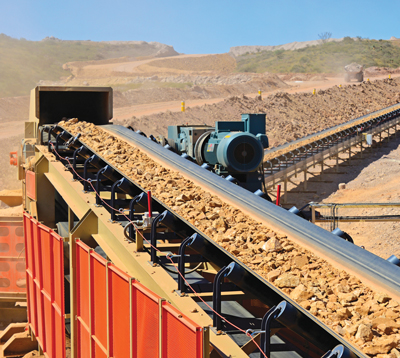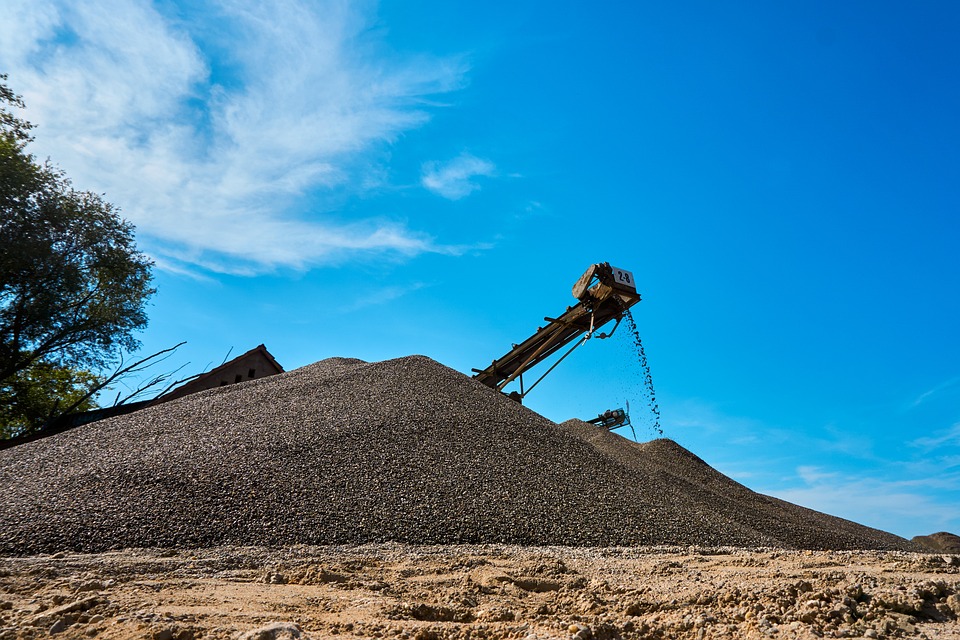
Understanding the Cost of Conveyor Belts: A Comprehensive Guide for Businesses
In today’s fast-paced industrial landscape, conveyor belts are indispensable for streamlining operations in industries like manufacturing, mining, logistics, and food processing. However, one of the most critical questions businesses face when considering a conveyor system is: What is the cost of a conveyor belt? This article, crafted with expertise and authority, aims to provide a detailed breakdown of the factors influencing conveyor belt costs, helping you make informed investment decisions. By understanding these costs, businesses can optimize budgets, enhance operational efficiency, and ensure long-term value.

Why Conveyor Belt Costs Matter
Conveyor belts are the backbone of material handling systems, automating the movement of goods to reduce manual labor, increase productivity, and improve workplace safety. However, the cost of a conveyor belt varies widely based on several factors, including material, size, application, and operational requirements. A thorough understanding of these costs is essential for budgeting, as the initial investment is only part of the total cost of ownership (TCO). Ongoing maintenance, energy consumption, and potential downtime also contribute significantly to long-term expenses.
This guide draws on industry insights and recent data to provide a clear picture of conveyor belt pricing, ensuring businesses can select the right system for their needs while balancing cost and performance.
Key Factors Influencing Conveyor Belt Costs
The cost of a conveyor belt is determined by multiple variables. Below, we outline the primary factors that impact pricing, helping you understand why costs can range from a few dollars per foot to hundreds of dollars per meter.
1. Material Type
The material of the conveyor belt is a major cost driver. Different materials are suited for specific applications, and their durability and specialized functionality directly affect pricing. Common materials include:
Rubber: Widely used in mining and construction for its durability and abrasion resistance. Costs range from $10 to $30 per foot.
PVC (Polyvinyl Chloride): Common in food processing and packaging due to its hygienic properties. Priced at $15 to $40 per foot.
Fabric: Used for lightweight applications like textiles or packaging, costing $20 to $50 per foot.
Steel-Cord: Designed for heavy-duty applications like mining, with prices from $50 to $100 per foot due to superior strength and longevity.
Metal: Used in high-temperature or heavy-duty environments, often exceeding $100 per foot for specialized applications.
2. Belt Dimensions
The width and length of the conveyor belt significantly influence costs. Wider and longer belts require more material, increasing the price per meter or foot. For example, a 30-inch-wide belt moving 300 tons per hour (TPH) over 1,000 feet will cost more than a narrower, shorter belt for lighter loads.
3. Design and Construction
Complex designs, such as those with cleats, sidewalls, or specialized coatings for heat or chemical resistance, add to the cost. For instance, a segmented urethane v-guide can double belt life but increases upfront costs.
4. Application-Specific Requirements
Industry-specific needs, such as FDA-approved belts for food processing or fire-resistant belts for underground mining (per MSHA Part 14 regulations), can significantly raise costs.
5. Installation and Operational Costs
Installation costs include labor, which varies by project complexity and location. Operational costs, such as energy consumption and maintenance, also contribute to the TCO. For example, energy-efficient belts can reduce power costs by up to 15.3% annually compared to standard belts.
6. Geographical Location
Shipping and regional market conditions affect costs. For instance, transporting a conveyor system from a manufacturing facility to a remote quarry can add $5,000 to $10,000 in shipping costs.

Average Conveyor Belt Costs by Type
To provide a clearer picture of pricing, the following table summarizes average costs per foot for common conveyor belt types, based on recent industry data from 2024 and 2025.
| Belt Type | Average Cost per Foot | Typical Applications |
|---|---|---|
| Standard Rubber | $10 - $30 | Manufacturing, Logistics |
| PVC | $15 - $40 | Food Processing, Packaging |
| Fabric | $20 - $50 | Textiles, Light to Medium-Duty |
| Steel-Cord | $50 - $100 | Mining, Construction |
| Specialized (e.g., Metal) | $100+ | High-Temperature, Heavy-Duty |
Source: Adapted from industry insights by Gram Conveyor and West River Conveyors.
Total Cost of Ownership (TCO) Considerations
While the initial purchase price is critical, the TCO provides a more comprehensive view of conveyor belt costs. TCO includes:
Initial Investment: Belt price, installation, and shipping.
Maintenance: Regular inspections, repairs, and replacement parts like motors or rollers.
Operational Costs: Energy consumption, which can be optimized with energy-efficient belts or modern drive systems.
Downtime: Unexpected breakdowns can lead to significant losses in productivity.
Training: Employee training for safe operation and maintenance.
For example, a study of a Polish mine showed that switching to an energy-efficient belt reduced power demand by 15.3%, saving thousands annually in energy costs. Similarly, reducing installation time from 8 hours to 45 minutes can yield significant labor savings.

Strategies to Optimize Conveyor Belt Costs
To maximize value, businesses can adopt the following strategies:
Compare New vs. Used Belts: New belts offer guaranteed quality but are pricier, while used belts are cost-effective but may require thorough inspection to avoid hidden wear.
Invest in Energy-Efficient Designs: Energy-saving belts or modern drive systems can lower long-term operational costs.
Work with Experts: Consulting with experienced providers like Sparks Belting or West River Conveyors ensures the right belt for your application, reducing costly errors.
Prioritize Preventive Maintenance: Regular maintenance, such as using impact beds to reduce wear, extends belt life and minimizes downtime.
Calculate ROI: Use the ROI formula [(Net Profit – Cost of Investment) / Cost of Investment * 100] to evaluate long-term savings from efficiency gains.
Cost Comparison: Conveyor Belts vs. Alternatives
When evaluating conveyor belts, businesses often compare them to alternatives like haul trucks. The table below highlights key cost considerations for a 1,000-foot conveyor system versus trucks, based on a study at the Fabrica iron ore mine in Brazil.
| Factor | Conveyor Belt | Haul Trucks |
|---|---|---|
| Initial Capital Cost | $250,000 - $350,000 | Lower, but increases with distance |
| Operational Cost | Lower per ton, energy-efficient | Higher per ton, fuel and labor costs |
| Capacity | 800 TPH (average) | 25 tons per trip (max) |
| Environmental Impact | Lower (less dust, noise) | Higher (fuel emissions) |
| Flexibility | Fixed infrastructure | Flexible routes |
Source: Adapted from West River Conveyors study.
Conveyors are more cost-effective for long distances and high-capacity operations, while trucks may be better for shorter, flexible routes.

Conclusion
Understanding the cost of a conveyor belt requires a holistic view of initial purchase, installation, and long-term operational expenses. By considering factors like material type, dimensions, and application-specific needs, businesses can select the right conveyor system to balance cost and performance. Energy-efficient designs, preventive maintenance, and expert consultation can further optimize costs, ensuring a high return on investment.
For tailored solutions, contact our team at [huacehng] to discuss your conveyor needs. We specialize in providing high-quality, cost-effective conveyor systems for industries worldwide, backed by years of expertise and industry-leading support.
Sources: Sparks Belting, Gram Conveyor, West River Conveyors, MDPI, Cambridge Engineered Solutions, Rapid-Veyor, DYNA Engineering.
 Gold Mining Belt Conveyors: Design, Selection, Engineering Calculations & 2025 Technology Guide
Gold Mining Belt Conveyors: Design, Selection, Engineering Calculations & 2025 Technology Guide
 The Ultimate Guide to Material Handling Belt Conveyors in Mining, Aggregates, Quarries & Cement Plants
The Ultimate Guide to Material Handling Belt Conveyors in Mining, Aggregates, Quarries & Cement Plants
 Tubular Belt Conveyor: Revolutionizing Bulk Material Handling
Tubular Belt Conveyor: Revolutionizing Bulk Material Handling
 Understanding the Cost of Conveyor Belts: A Comprehensive Guide for Businesses
Understanding the Cost of Conveyor Belts: A Comprehensive Guide for Businesses
 How to Choose the Best Mining Conveyor Idlers for Your Operation
How to Choose the Best Mining Conveyor Idlers for Your Operation
 Daily Idler Maintenance Checklist: A Comprehensive Guide
Daily Idler Maintenance Checklist: A Comprehensive Guide
 How to Choose the Right Belt Conveyor Company: A 2025 Buyer’s Guide
How to Choose the Right Belt Conveyor Company: A 2025 Buyer’s Guide
 Conveyor Idlers Installation Guide: From Beginner to Expert
Conveyor Idlers Installation Guide: From Beginner to Expert


